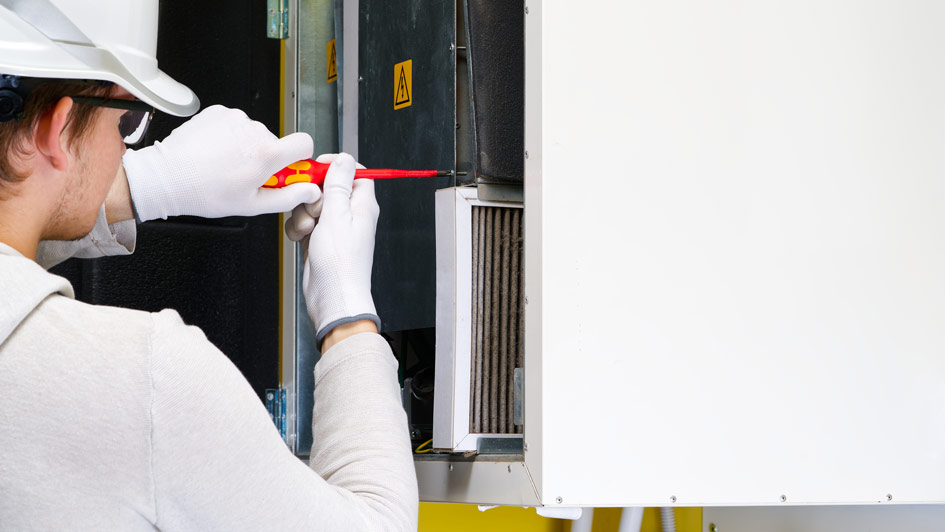
In the realm of modern HVAC innovations, Energy Recovery Ventilators (ERVs) stand out as key players in optimizing ventilation efficiency. These systems go beyond the basics of simply exchanging indoor and outdoor air—they actively recover and utilize the energy present in the outgoing air to enhance the overall performance of your ventilation system. In this blog post, we’ll delve into the workings of ERVs, exploring how they contribute to energy efficiency, indoor air quality, and the sustainable operation of your HVAC system.
The Essence of Energy Recovery
At the heart of ERVs lies a sophisticated mechanism designed to capture and utilize the thermal energy present in the outgoing air. As indoor air is expelled, ERVs recover the heat during the winter or coolness during the summer, transferring it to the incoming fresh air. This ingenious process minimizes the strain on your HVAC system by preconditioning the incoming air.
Year-Round Comfort with Dual Efficiency
One of the standout features of ERVs is their ability to operate efficiently in both heating and cooling seasons. In winter, ERVs capture the warmth from the outgoing air, pre-warming the fresh air. Conversely, in summer, they transfer the cooler indoor air to the incoming stream, reducing the load on your air conditioning system. This dual efficiency ensures year-round comfort.
Optimizing Indoor Air Quality
ERVs not only regulate temperature but also play a vital role in enhancing indoor air quality. By continuously exchanging stale indoor air with fresh outdoor air, ERVs help dilute pollutants and maintain a healthy indoor environment. The energy recovery process ensures this exchange occurs without compromising the energy efficiency of your HVAC system.
Moisture Management for Healthier Spaces
Proper moisture management is integral to indoor comfort and health. ERVs excel in controlling humidity levels by transferring moisture between the incoming and outgoing air streams. This feature prevents excessive dryness in winter and curtails the risk of mold and mildew growth in humid conditions, contributing to a comfortable and healthier living environment.
Energy Efficiency and Cost Savings
ERVs contribute significantly to energy efficiency by reducing the workload on your heating and cooling systems. By harnessing the energy present in the exhaust air, ERVs decrease the demand for additional heating or cooling, resulting in lower energy consumption and cost savings over time.
Quiet and Unobtrusive Operation
ERVs operate quietly and unobtrusively, making them an ideal addition to residential and commercial spaces. The absence of noise ensures that occupants can enjoy a peaceful indoor environment while benefiting from the continuous exchange of fresh air and energy recovery.
Customizable Ventilation Strategies
ERVs offer flexibility in ventilation strategies. They can be integrated with various HVAC systems and ductwork configurations, allowing for a tailored approach to meet the specific needs of your space. This adaptability ensures that ERVs seamlessly complement your existing heating and cooling infrastructure.
Sustainability in Action
As energy efficiency becomes a focal point in building design and operation, ERVs align with sustainability goals. By optimizing ventilation efficiency and reducing the reliance on external heating or cooling sources, ERVs contribute to a more sustainable and environmentally friendly operation of your HVAC system.
Compliance with Building Codes and Standards
ERVs are designed to meet or exceed industry standards and building codes related to ventilation and energy efficiency. Integrating ERVs into your ventilation system ensures compliance with regulations, providing peace of mind in terms of indoor air quality and sustainable building practices.
Professional Assessment and Installation
To maximize the benefits of ERVs, it’s essential to consult with HVAC professionals. A thorough assessment of your space and ventilation needs enables professionals to recommend and install ERV systems that align with your goals for energy efficiency, indoor air quality, and overall comfort.
Conclusion
Energy Recovery Ventilators (ERVs) epitomize the marriage of innovation and efficiency in modern HVAC systems. By seamlessly capturing and utilizing the energy present in outgoing air, ERVs optimize ventilation, enhance indoor air quality, and contribute to sustainable building practices. As you explore ways to elevate the performance of your HVAC system, consider the profound impact that ERVs can have on the efficiency and comfort of your living or working space.